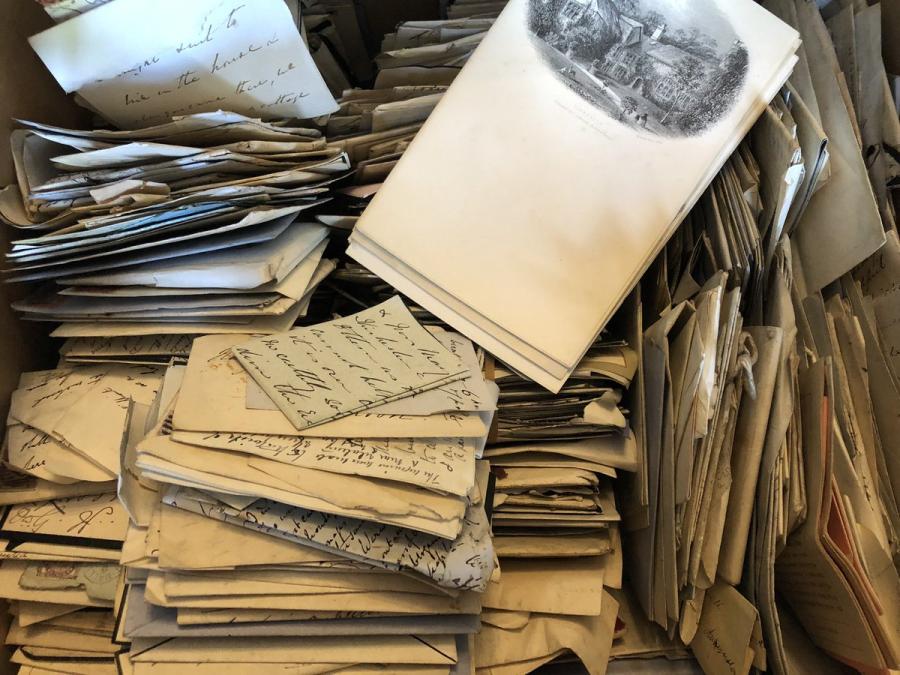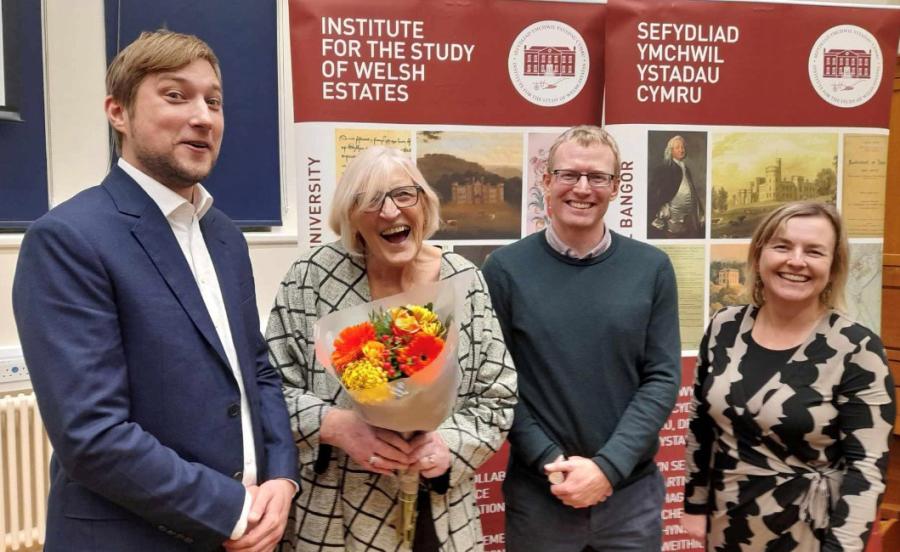In 2019 Lord Mostyn kindly agreed to transfer two chests of correspondence, accounts and papers relating to Lady Augusta Mostyn, from Mostyn Hall in Flintshire to Bangor University Archives and Special Collections.

Over a period of four years, Dr. Dinah Evans (a former Lecturer in History at Bangor University) volunteered with the Archives and ISWE to research, arrange and catalogue the three linear metres of papers, with guidance from Elen Wyn Simpson, University Archivist.
Lady Augusta Mostyn (1830-1912) is recognised locally as one of the most influential women in the history of north Wales. This influence is primarily associated with the development of Llandudno and institutions such as Oriel Mostyn Gallery. She is also appreciated as an important figure in the history of the Mostyn family, playing a pivotal role in the trajectory of the estate across the late-19th and early-20th centuries.
Augusta Nevill was born at Birling Manor near Maidstone in Kent, as the daughter of William Nevill, 4th Earl of Abergavenny, and Lady Caroline Leeke. In 1855 she married Thomas Edward Lloyd-Mostyn (1830-61), son and heir apparent to the 2nd Baron Mostyn. In 1861 she was widowed following the death of her young husband from consumption, and left to bring up her two young sons. She dedicated much of her life to preserve the inheritance of her eldest, Llewellyn Nevill Vaughan Lloyd-Mostyn (1856-1929), who would eventually succeed as 3rd Baron Mostyn on the death of his grandfather in 1884. The nature of his inheritance depended on finding a solution to the severe indebtedness of the Mostyn family. Despite the extent of the family’s landholdings and continuing development of Llandudno, the scale and complexity of the family’s debts were a serious issue. Lands needed to be sold in order to reduce the deficit but Lady Augusta argued forcefully that the sale of Llandudno would be detrimental to the interests of her son, considering it to be ‘the mainstay of the family’. She played a pivotal role in returning the family to a state of financial stability.
In the 1870s she returned to live at Gloddaeth Hall, refurbishing and expanding the old family mansion, and making it a centre of community activity during her residence, until her death in 1912. Across the same period, she played a central role in preserving the neighbouring mansion of Bodysgallen. During her lifetime, she made an immense contribution towards the development of Llandudno and district, funding the building of schools, churches and other public infrastructure. She became central to the civic life of the seaside resort. An enthusiastic photographer, she also played a leading role in the establishment of Mostyn Art Gallery, which provided the headquarters for Gwynedd Ladies’ Arts Society.

In a celebratory public event held at Bangor University in December 2023, as part of Explore Your Archive Week, Dr. Dinah Evans outlined some of the insights provided by the papers and pointed towards their significant research potential. The event also included the formal deposit of the collection in Bangor University Archives by Lord Mostyn. Dinah has since produced an engaging booklet on the life and legacy of Augusta Mostyn, for sale in Llandudno and Mostyn Hall.
We are exceptionally grateful to Dinah for her dedication to this work. Her endeavours provide a fantastic foundation for a more comprehensive study of Augusta Mostyn. Unlike other Welsh gentlewomen such as Lady Llanover, Hester Thrale, Amy Dillwyn and Lady Charlotte Guest, there is no academic biography of Lady Augusta. This in part reflects the desperate need for the next generation of Welsh scholarship to reveal the lives and experiences of women in the history of Wales.
